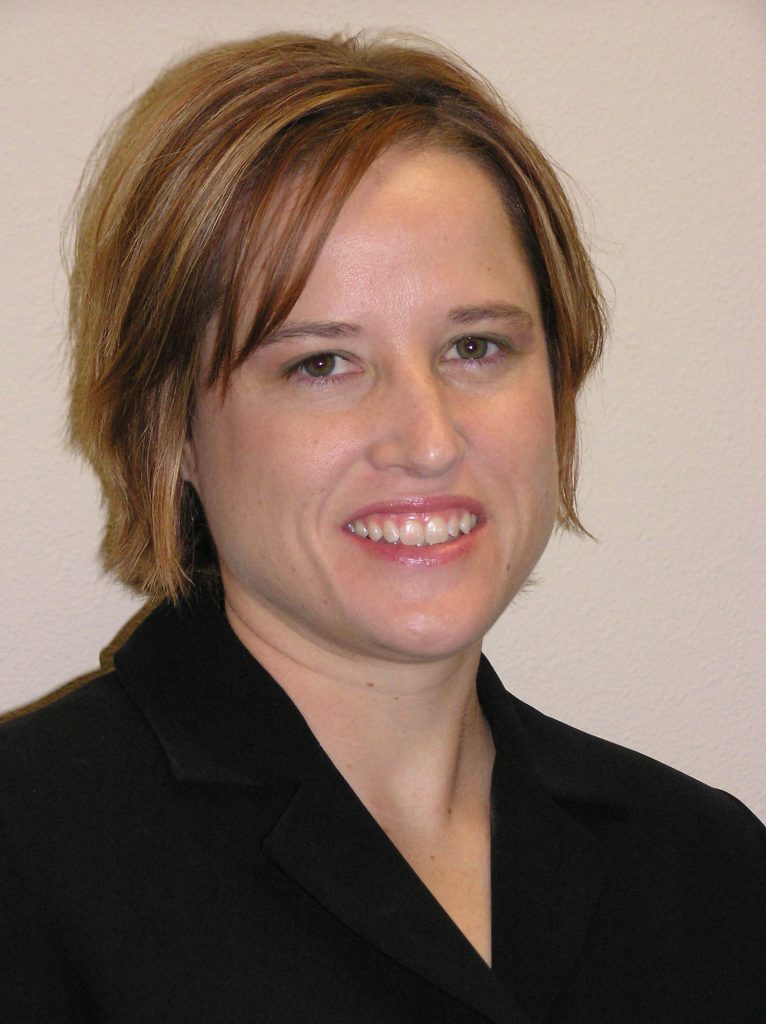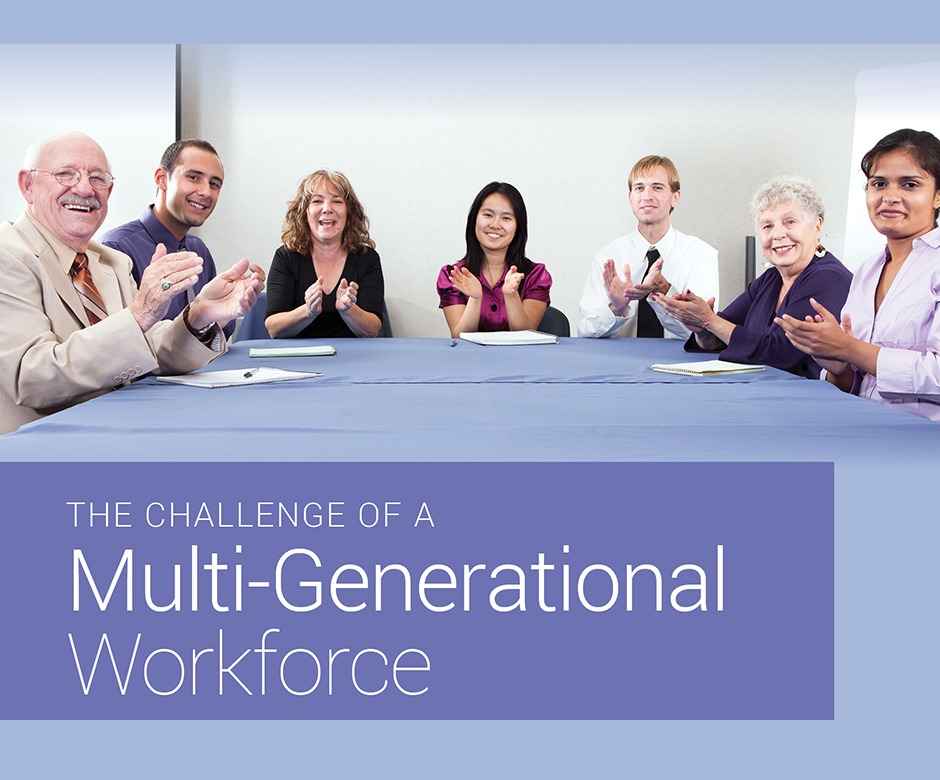In the past, the workplace was represented, at any given moment in time, by two generations. There were the long-serving, “dyed-in-the-wool” older generation and the ambitious newcomers.
Today, for one of the only times in history, there can be as many as five different generations in the workplace at one time. The reasons are many. One is that many older workers are continuing to work longer, by choice or financial necessity, either full-time or part-time, well past the traditional retirement age
As a result, it is not uncommon for businesses to be faced with the challenges of managing several generations at the same time, each distinctive in their own way. This diversity can certainly provide benefits in terms of the unique backgrounds and perspectives that each generation brings. This can also be challenging because every generation embodies differing values, beliefs, and opinions as they relate to work, which can lead to misunderstandings and conflict.
Sound familiar? Employers all over the country are wondering how to effectively and successfully manage a multi-generational workforce. Employers and managers must adapt and adjust to effectively manage a generationally diverse group of employees. Failure to do so could have a negative impact on the business.
Every generation is shaped by the world it grows up in. Family, school, religion, friends, and media are some of the sources that form the foundation of our core values. In fact, research indicates that by the time we reach the age of sixteen, we have already locked in most of the values and beliefs that will shape our attitudes and decisions, both personally and professionally, for the rest of our lives.
The potential for conflict and misunderstanding is very real. Intergenerational conflict within the workplace
is a growing issue. Different generations can struggle to understand one another’s values and working styles. Working together and sharing power can be problematic. And, as more people delay their retirement, younger generations can feel their opportunities for career advancement are being restricted.
Recognizing the potential for conflict and taking steps to proactively minimize it can help ensure a positive environment for all – one in which multiple perspectives and generations can thrive.
Here are eight strategies for successfully navigating multiple generations in the workplace:
1) Discover what workers truly want. Understand what makes the different generations “tick” in broad terms (there’s a lot of information out there on this topic). That being said, while there are very broad generalizations that can be applied to any one generation, it is important to note that there are always exceptions to the rules. Avoid the potential to accept as true the stereotypes about various generations. Too often employers guess at what workers want without speaking with them to understand what they want most. This was never the best management method, now it is even worse since each generation can bring very different wants and needs to the table.
2) Be flexible and accommodating. Being able to accommodate their different needs and preferences, where practical, can help to prevent division and conflict.
No area is this more apparent than in communication. Each generation can often have their preferred methods of communication. For some it is one-on-one (telephone or written communication), for others it could be emails and texts or the collaborative interaction of social media. Sticking rigidly to your own favored means of communication can alienate others, therefore, while it might not feel natural to you, try to tailor your communication to suit the recipient whenever it’s appropriate.
3) Don’t dwell on differences. There is a tendency to focus more on what is different about each generation than on the similarities that might exist. Instead of focusing on the differences, focus on the seven values that are shared and matter most to workers of all generations, namely:
- Feeling respected
- Being listened to
- Having opportunities for mentoring
- Understanding the big picture
- Receiving effective communication
- Receiving positive feedback
- Experiencing an exchange of ideas
Addition commonalities relate to the twelve foundation essentials that need to be present for long term success with all employees, regardless of age or generation:
- Ethically sound business principles and quality healthcare
- A consistent and fair management style
- Policies that are friendly, frank, fair, and firm
- A pleasant and harmonious work environment – minimal stress
- Adequate facility, instruments, tools, equipment and supplies
- A competent and compatible staff
- Assistance in learning: communication, decisions and initiative
- Clearly defined job responsibilities
- Recognition: acknowledgement, contribution and appreciation
- Adequate compensation and benefits
- Feedback: knows how the employer thinks they are doing
- Good communication and worthwhile staff meetings
4) Build collaborative relationships. We understand and appreciate others more when we have the opportunity to get to know them. Creating opportunities for employees of different generations to interact in both work- and non-work-related settings can help to build relationships and minimize misunderstandings.
5) Create opportunities for cross-generational mentoring. This can work both ways. Don’t make the mistake of automatically assuming that the only mentorship that can happen is to the younger generations by older generations. All age groups have opportunities to learn from each other. Generational diversity has great potential. People from different generations can grow and learn from one another as they are exposed to one another’s ideas and experiences. The new perspectives they gain can spark new ideas and prompt new ways of working.
6) Play to their strengths. While avoiding stereotypes, it is true that every generation has its own skill set. When pairing teams or assigning projects, make sure everyone is able to do something that they are good at. For instance, if you are working on a new social media campaign, it may be helpful to team up a millennial who knows how to “hashtag” with a baby boomer who has more experience with client relationships. The baby boomer can provide insight on what clients respond to while the millennial can help with phrasing for better social media exposure.
7) Rethink training and development. Each generation may have different ways in which they need/want training and development. For example, long formal training sessions are a thing of the past for the younger generations. Today’s reality is that workers spend 1% of their time on training and development, which equates to 24 minutes per week. In this context, learning and development needs to change. It needs to be delivered in small chunks, of differing lengths, accessible on mobile devices. It needs to come from experts who are motivating, and needs to provide a sense of community.
8) Rethink career development. Generations Y and Z view career development and advancement in radically different ways than Gen Xers or BabyBoomers. Workers born in the ‘80s and ‘90s tend to view a job as a steppingstone. Generally, they place a greater emphasis on professional development and training opportunities when making career decisions, such as where to apply for a job, if to accept an offer, and how long to remain with an employer.
In contrast, workers born in the mid-1950s to the 1970s generally place a greater emphasis on tenure and loyalty to a company. They tend to have a more formal, traditional view of career advancement through promotions and increases in pay.
To optimize employee satisfaction, companies should consider cross-training for different positions with a focus on the development of transferable skills. This will help to keep the younger generations engaged, while honoring the experience and tenure of older workers.
As your workplace becomes more diverse, not only in terms of generation but also other attributes, it’s important to take time to understand and provide opportunity for interaction with and between various groups. The more you are able to understand each other, the better you are able to work together.
THE BOTTOM LINE IS THIS: It doesn’t matter how old or how experienced, employees crave respect. With the variety of multi-generational employees in today’s workplace, companies can no longer abide by traditional rules of leadership and management. Organizations can achieve real strategic advantage by embracing the diversity among generations to create a flexible work environment that values all people and keeps them productive, regardless of age. Only when each group respects the others can all thrive. Respect and acceptance are vital for a successful multi-generational team.

Rebecca Boartfield is a Human Resources and Employment Compliance Consultant with Bent Ericksen & Associates.
FMI: www.bentericksen.com
Read more from Bent Ericksen & Associates:

